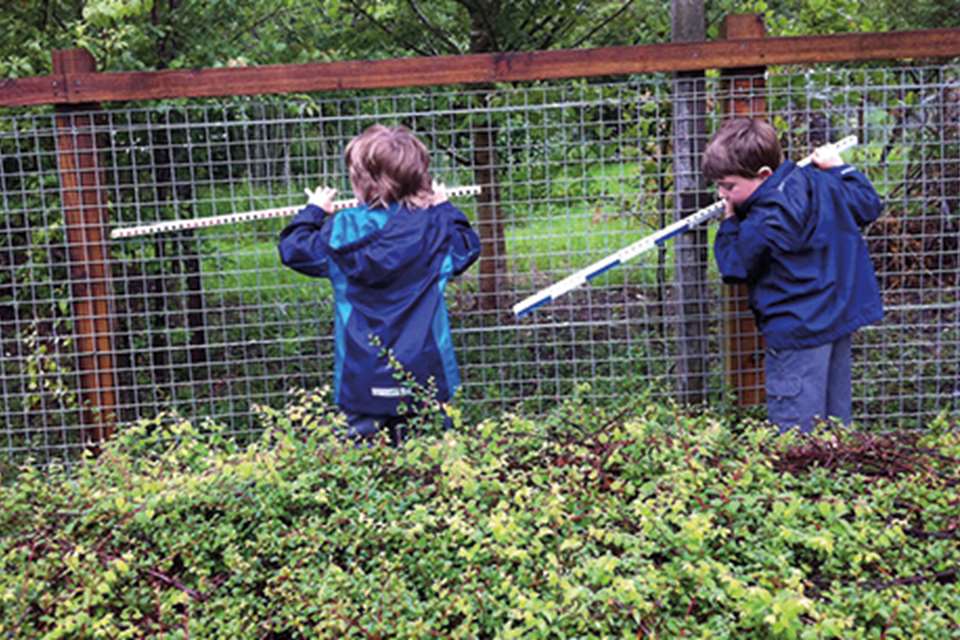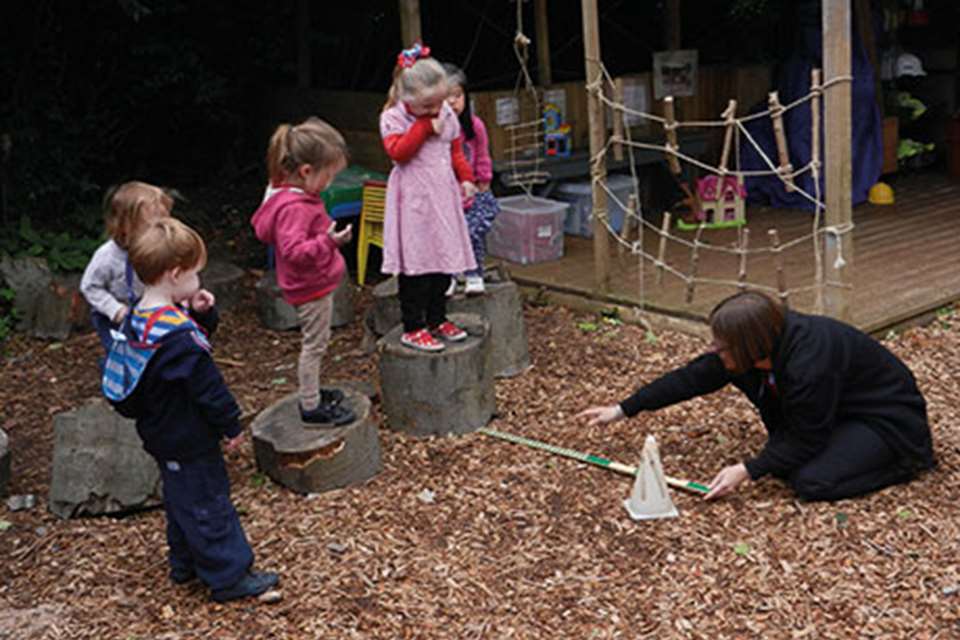EYFS Activities: 5 ways to explore outdoors with under-threes
Julie Mountain
Monday, September 17, 2018
Outdoors is the very best place for babies and toddlers to explore, learn how the body works and to develop its potential, explains Julie Mountain

Download the PDF of this article
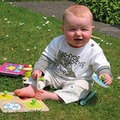 1. BAREFOOT WALK
1. BAREFOOT WALK
Barefoot walking is crucial in early childhood: children gather information about the ground through their highly sensitive and still-forming feet – is it steep, flat, bumpy, rough, wet, sharp, uneven, loose? This feedback allows children to manage their balance much more effectively than when wearing shoes, which blunt many of these ‘messages’.
Podiatrists and academic researchers also suggest that barefoot walking improves posture, foot strength and proprioception (the ability to understand where our body is in space). Allow your babies and toddlers as much barefoot outdoor time as possible – including in rain and mud.
Unless footwear is essential, for example on snowy days, giving children some time barefoot should be possible every day. Allow children’s feet to explore all the textures they can reach: gravel, sand, bark, water, paving, grass, mud, rubber crumb, encouraging them to move vertically as they become more physically able.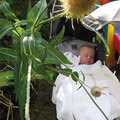 2. SLEEPING
2. SLEEPING
Being asleep is a great way to experience outdoors. Babies and toddlers learn to fall asleep to ambient sounds such as birds, cars and other children playing. The cooler, fresher air helps them to enjoy restful sleep, and babies who can nap outdoors can nap pretty much anywhere.
On waking, babies and toddlers sleeping outdoors open their eyes to an ever-changing panorama of sky, clouds, trees and birds. Wrap babies and toddlers in layers appropriate to the temperature.
3. HIDING
The need for seclusion, retreat and solitude is a basic human requirement. Babies and toddlers are no different, and spaces should be created outdoors where they can ‘escape’ when their physical abilities and confidence allow them to. Remember that just because a toddler can’t see you, it doesn’t mean you can’t see – or hear – them, so allow them to explore to the limits of their aspirations, which over time you’ll see develop from rolling over in long grass to crawling into tunnels and bushes and building dens.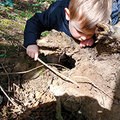 4. SEASONAL CHANGE
4. SEASONAL CHANGE
Help very young children understand and connect with seasonal change by identifying a ‘seasonal spot’ with a good view of the natural elements in your outdoor space. Choose significant dates to visit the spot – for example, the winter, spring, summer and autumnal solstices, or children’s birthdays – and describe what you can see.
Take lots of photographs from the spot and create a floor book that illustrates the changes throughout the year. In time, children will be able to compare ‘now’ with ‘this time last year’. They will also be able to talk about how they have changed themselves – now they can toddle, walk, run, are taller…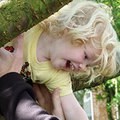 5. PHYSICALITY
5. PHYSICALITY
At birth, babies have already spent nine months moving and testing their bodies. As Jan White notes, ‘Movement is a child’s first language’, and outdoors, babies and toddlers have the freedom to move in any direction, at any speed and in any manner they choose. Provide lots of physical challenge for babies outdoors: objects to pull up on, tunnels to crawl through, grassy mounds to roll down, water and mud to splash in, loose parts to use.
And another thing…
Risk-taking with babies and toddlers is not off the agenda. Even the very youngest children can enjoy toasting a marshmallow on the fire, sliding through snow or climbing a tree. Adopt a commonsense approach to risk assessment, rather than focusing on worst-case scenarios:
- What are the benefits to the child?
- What are the actual risks?
- How likely are the risks? How severe are the consequences?
- How can we ensure babies and toddlers are as safe as necessary?
In its High Level Statement, the Health and Safety Executive reminds us that we should be risk-assessing children’s play to enable risk-taking, not to prevent it, and that ‘no child will learn about risk if they are wrapped in cotton wool’. ?



